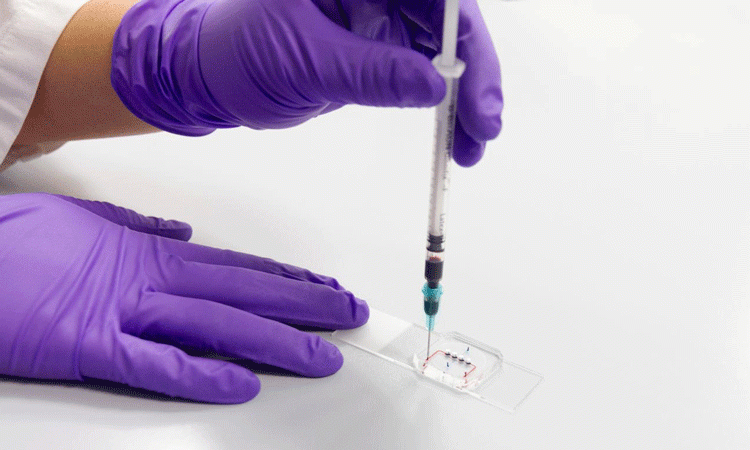Scientists develop retina-on-a-chip to study eye diseases
Posted: 28 August 2019 | Victoria Rees (Drug Target Review) | No comments yet
Combining organoid and organ-on-a-chip technologies, researchers have created a model which will allow them to study eye diseases and treatments for the retina.


This is the retina-on-a-chip technology (credit: Fraunhofer IGB).
Scientists have announced their development of a retina-on-a-chip, which combines human cells with an artificial tissue-like system. The developers say their model can be used to test the effects of drugs on the retina more effectively.
The research was conducted by Eberhard Karls University Tübingen and the Fraunhofer Institute for Interfacial Engineering and Biotechnology IGB, both Germany.
Researchers often rely on animals or retina organoids to study eye diseases and the side effects of drugs. However, these can often yield inaccurate results.
“It is extremely challenging, if not almost impossible, to recapitulate the complex tissue architecture of the human retina solely using engineering approaches,” explained co-lead author Christopher Probst, Postdoctoral Researcher at the Fraunhofer Institute for Interfacial Engineering and Biotechnology.
To create their model, the scientists used human pluripotent stem cells to develop into several different types of retina cells on artificial tissue. This recreates the environment that cells would experience in the body and delivers nutrients and drugs to the cells through a system that mimics human blood vessels.
“This combination of approaches enabled us to successfully create a complex multi-layer structure that includes all cell types and layers present in retinal organoids, connected to a retinal pigment epithelium layer,” said co-lead author Kevin Achberger, Postdoctoral Researcher at the Eberhard Karls University of Tübingen. “It is the first demonstration of a three-dimensional retinal model that recreates many of the structural characteristics of the human retina and behaves in a similar way.”
The team treated their retina-on-the-chip with the anti-malaria drug chloroquine and the antibiotic gentamicin, which are toxic to the retina. They found that the drugs had a toxic effect on the retinal cells in the model, suggesting that it could be a useful tool for testing for harmful drug effects.
“Also, it may enable scientists to take stem cells from a specific patient and study both the disease and potential treatments in that individual’s own cells,” Achberger said.
…the scientists used human pluripotent stem cells to develop into several different types of retina cells on artificial tissue”
“This new approach combines two promising technologies – organoids and organ-on-a-chip – and has the potential to revolutionise drug development and usher in a new era of personalised medicine,” concluded senior author Peter Loskill, Assistant Professor at the Eberhard Karls University of Tübingen and head of the Fraunhofer Attract group Organ-on-a-Chip at the Fraunhofer Institute for Interfacial Engineering and Biotechnology.
The results were published in eLife.
Related topics
Drug Targets, Organ-on-a-Chip, Organoids, Research & Development, Stem Cells
Related organisations
Eberhard Karls University Tübingen, eLife, Fraunhofer Institute for Interfacial Engineering and Biotechnology IGB
Related people
Christopher Probst, Kevin Achberger, Peter Loskill


